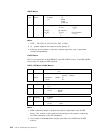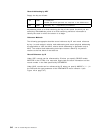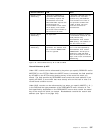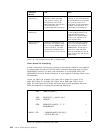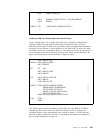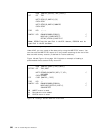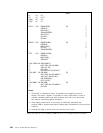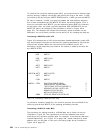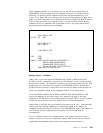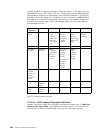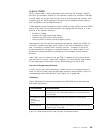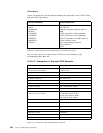
Notes
RC DS CL1
WC DC CLI′0′
COUNT DC H′0′
THREE DC H′3′
*
R0FILE DCB DDNAME=R0DD, (9) C
DSORG=PS, C
MACRF=(WL), C
SYNAD=OSDAERR1, C
BLKSIZE=47, C
KEYLEN=3, C
RECFM=U
*
DAMFILE DCB DDNAME=DAMDD, (9) C
DSORG=DA, C
MACRF=(WAC), C
OPTCD=F, C
SYNAD=OSDAERR2
*
TAPE DCB DDNAME=TAPEDD, C
DSORG=PS, C
MACRF=(GM), C
EODAD=EOF
*
//GO.TAPEDD DD DSN=OSSAMFIL,
// UNIT=3420,VOL=SER=NONE,
// LABEL=(5,NL),
// DISP=OLD, -
// DCB=(BLKSIZE=50,RECFM=F)
//GO.R0DD DD DSN=UDAM, (9)
// UNIT=3340,VOL=SER=WORK12,
// SPACE=(47,(1000,100)),
// DCB=(DSORG=DA),
// DISP=(,KEEP)
//GO.DAMDD DD DSN=UDAM, (9)
// UNIT=3340,VOL=SER=WORK12,
// DISP=OLD
Notes:
1. One track, in sequential order, is erased and a capacity record is
written. On return, register 15 contains a return code which is zero if
another available within the initial extents, and is 8 if the next track
will require secondary space allocation.
2. If the return code was 0, a new track is initialized, otherwise the
second DCB is opened and actual loading may commence for the area just
cleared.
3. Initially this byte is set to zero and no branch will occur.
Figure 49 (Part 2 of 3). Loading a DAM File of U. or V. Length Records under MVS
322 VSE to OS/390 Migration Workbook



